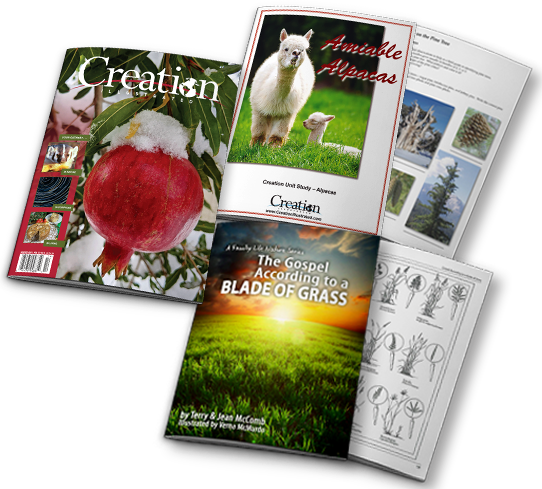The chance to encourage your child’s love of nature is among one of the many perks to homeschooling. The outdoors hold countless lessons for kids of all ages, and, because of God’s creativity, your little ones can find inspiration, information, and joy from this teaching method.
It’s no surprise that God’s Creation is the perfect classroom for nearly all subjects. Let’s look at some interesting ways you can incorporate nature into your existing homeschool curriculum.
Introducing Nature with a Biblical Worldview
It’s incredible how many learning opportunities nature can create for us. It’s also a practical way to begin exploring God’s character. When God created the world, He gave us a perfect picture of who He is.
“For since the creation of the world His invisible attributes are clearly seen, being understood by the things that are made, even His eternal power and Godhead, so that they are without excuse.” —Romans 1:20
Just as Christian homeschooling families value a biblical worldview, we should also value Creation and all that it can teach us about God and His character. We can utilize Creation in conjunction with the Word to teach our children life skills, as well as who God is and how to grow in a relationship with Him.
3 Ways God Reveals Himself through Nature
1. God takes care of His Creation.
God is the master artist, architect, engineer, physician, and teacher. Though we rely on many man-made luxuries, God’s Word promises that He will provide everything we need.
“‘Therefore I say to you, do not worry about your life, what you will eat or what you will drink; nor about your body, what you will put on. Is not life more than food and the body more than clothing? Look at the birds of the air, for they neither sow nor reap nor gather into barns; yet your heavenly Father feeds them. Are you not of more value than they?’”—Matthew 6:25-26
2. God delights in beauty.
God is beautiful. In fact, He is so glorious that, as humans, we can’t even gaze upon His face directly. There is beauty all around us within God’s created world, and His powerful design shines through His Creation. His goodness and character are revealed in everything we see.
“‘But now ask the beasts, and they will teach you; And the birds of the air, and they will tell you; Or speak to the earth, and it will teach you; And the fish of the sea will explain to you. Who among all these does not know that the hand of the Lord has done this, In whose hand is the life of every living thing, And the breath of all mankind?’”—Job 12:7-10
3. God’s timing is perfect.
Timing is everything. To see the change of seasons in nature is to see God’s perfect timing.
Our lives are intricately woven into 60-minute hours, 24-hour days, and 365-day years. Each day beginning with the rising of the sun. Each night consisting of a phase of the moon. These perfectly planned cycles remind us of God’s precise timing in and of all things.
“He has made everything beautiful in its time. Also He has put eternity in their hearts, except that no one can find out the work that God does from beginning to end.”—Ecclesiastes 3:11
By exploring nature, we are exploring the full majesty of God and His ability to provide for our physical needs. The more we explore and understand God, the more we can trust Him in the future.
Practical Ways to Study Nature
 First and foremost, go outside and let nature take its course—literally! You have the ability to utilize anything and everything you see. Keeping daily journals is a fun and exciting way to keep track of what you are learning from one day to the next.
First and foremost, go outside and let nature take its course—literally! You have the ability to utilize anything and everything you see. Keeping daily journals is a fun and exciting way to keep track of what you are learning from one day to the next.
Pick any subject: science, math, or writing. All of them can be combined when it comes to learning in nature. You can start by choosing a Psalm, poem, or piece of art to give you inspiration for the week.
For the subject of math, count the number of petals on a flower, then multiply that by a certain number of flowers. Count how many seconds it takes a leaf to float down a 10-foot section of a stream. Then calculate how long it would take to travel a mile downstream (5,280 feet in a mile, divided by 10 feet, times the number of seconds it took to travel 10 feet, divided by 60 seconds in a minute = the number of minutes it would take to travel a mile).
Think about when you were a child and learned how a caterpillar turns into a colorful butterfly. The next time you saw the furry critter crawling on a branch, didn’t you think about it differently?
This is what nature does—provides endless possibilities for learning.
Teach a Biblical Worldview through Nature
At the end of each subject, you can easily direct your children back to God by asking simple questions such as the following:
- Did God reveal anything specific about His character to you through this experience?
- If so, what elements were revealed? (e.g., law, judgment, provision)
- What did you learn with your head?
- What did you learn with your heart?
“The heavens declare the glory of God; And the firmament shows His handiwork. Day unto day utters speech, And night unto night reveals knowledge. There is no speech nor language Where their voice is not heard.”—Psalms 19:1-3
Personalizing Nature Study
For many homeschool moms, the goal is to be able to nurture a child’s unique, God-given personality while still learning and growing academically. Nature seems to fit perfectly into a child’s learning experience, as it offers a variety of ways to interact and discover the world around them.
And one way that children best absorb information is by exploring nature in the most natural sense.
Individual Expression
Creation offers plenty of room for creative expression. Perhaps your child’s journal will be full of artwork, while others may have pages of written descriptions of what they’ve seen. The goal is to allow their individuality to blossom.
Getting Their Hands Dirty
 Let kids get their hands dirty. Kids become much more engaged in learning when they have a personal stake in it. If space allows, plant a garden or even a few potted plants that they can grow from seed to table. The lessons learned from this experience will far outweigh anything they learn in a textbook.
Let kids get their hands dirty. Kids become much more engaged in learning when they have a personal stake in it. If space allows, plant a garden or even a few potted plants that they can grow from seed to table. The lessons learned from this experience will far outweigh anything they learn in a textbook.
It’s important to remind our kids that our unique qualities are special and intentional. We can praise God that He has designed each and every person with a purpose according to His will.
“For You formed my inward parts; You covered me in my mother’s womb. I will praise You, for I am fearfully and wonderfully made; Marvelous are Your works, And that my soul knows very well.”—Psalms 139:13-14
Seasonal Nature Study
Although many of us live in places that have different seasons, it is still possible for us to bring Creation inside when needed. Whether due to allergies or cold weather, there will be times when going outside isn’t an option.
When this is the case, bring nature indoors. You can bring God’s created world inside by growing houseplants, crafting a homemade terrarium, examining an ant farm or aquarium, and even studying the family pet.
When we take the time to appreciate Creation, we are also taking a moment to acknowledge God. Remember, God reveals Himself through nature, creating a theological reason to study it.
“For by Him all things were created that are in heaven and that are on earth, visible and invisible, whether thrones or dominions or principalities or powers. All things were created through Him and for Him.”—Colossians 1:16



